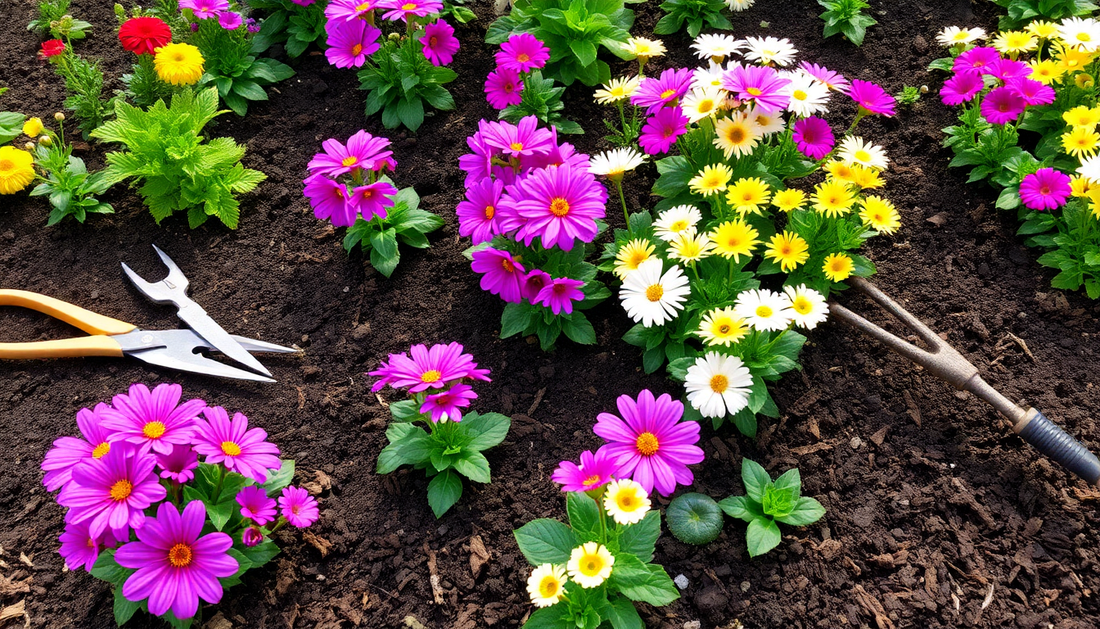
Winning the War Against Weeds: Strategies for a Lush, Weed-Free Flower Garden
As the sun rises on a crisp spring morning, you step outside to admire your carefully tended flower beds, only to be met with a disheartening sight – a sea of unwelcome weeds, threatening to overtake the vibrant blooms you've worked so hard to cultivate. Weeds can be the bane of any gardener's existence, but with the right strategies and a little elbow grease, you can reclaim your flower beds and enjoy a lush, weed-free oasis.
In this comprehensive guide, we'll explore the best practices for preventing weeds from taking over your flower gardens, ensuring that your beloved blooms can thrive without competition from these pesky invaders.
Understanding Weeds: The Culprits and Their Habits
Before we dive into the strategies for weed prevention, it's essential to understand the nature of weeds and the challenges they pose to flower gardens. Weeds are opportunistic plants that can quickly establish themselves in any available space, outcompeting your carefully selected flowers for essential resources like water, nutrients, and sunlight.
Some of the most common weed species found in flower beds include:
-
Dandelions: These ubiquitous yellow flowers may seem charming, but their deep taproots and prolific seed production make them a formidable foe in the garden.
-
Crabgrass: This aggressive grass can quickly spread and choke out delicate flower plants, creating an unsightly and uneven appearance.
-
Purslane: This succulent weed is known for its ability to thrive in dry, poor soil conditions, making it a persistent problem in many flower gardens.
-
Chickweed: This low-growing, mat-forming weed can quickly smother smaller flower plants, depriving them of essential nutrients and sunlight.
Understanding the unique characteristics and growth habits of these weeds will help you develop a more targeted and effective approach to preventing their invasion.
Preparing the Soil: The Foundation for Weed-Free Flower Beds
One of the most crucial steps in preventing weeds from taking over your flower beds is to ensure that the soil is well-prepared and optimized for healthy plant growth. This involves several key steps:
Amending the Soil
Adding organic matter, such as compost or well-rotted manure, to your flower bed soil can improve its structure, nutrient content, and water-holding capacity. This creates an environment that is less hospitable to weeds while providing your flowers with the resources they need to thrive.
Testing and Adjusting pH
Weeds can often outcompete flowers in soil with an unsuitable pH. Test your soil and make any necessary adjustments to ensure that the pH is within the optimal range for your chosen flower species. This can involve adding lime to raise the pH or sulfur to lower it.
Removing Existing Weeds
Before planting your flowers, take the time to thoroughly remove any existing weeds, including their roots, to prevent them from re-establishing themselves. This can be a labor-intensive task, but it's an essential step in creating a weed-free foundation for your flower beds.
Mulching for Weed Prevention
Applying a thick layer of organic mulch to your flower beds is one of the most effective ways to prevent weeds from taking hold. Mulch serves several important functions:
-
Blocking Light: A 2-4 inch layer of mulch deprives weed seeds of the light they need to germinate, effectively smothering them before they can even emerge.
-
Retaining Moisture: Mulch helps to retain soil moisture, making it more difficult for weeds to establish their roots and thrive.
-
Suppressing Growth: Even if a few weeds do manage to poke through the mulch, the physical barrier makes it harder for them to grow and spread.
When selecting a mulch, opt for materials like shredded bark, wood chips, or leaves, as they will slowly decompose and enrich the soil over time. Avoid using materials like gravel or stones, as they can actually promote weed growth by providing a warm, dry environment.
Companion Planting and Crop Rotation
In addition to physical barriers like mulch, you can also employ strategic planting techniques to discourage weed growth. Companion planting, where you grow certain plants together to create a mutually beneficial relationship, can be a powerful tool in the fight against weeds.
For example, planting fast-growing, dense-foliage plants like marigolds or nasturtiums around the perimeter of your flower beds can help to shade out and outcompete weeds. Additionally, rotating your flower plantings from year to year can disrupt the life cycles of persistent weed species, making it more difficult for them to establish a foothold in your garden.
Maintaining a Healthy, Vigorous Flower Garden
Ultimately, the key to preventing weeds from overtaking your flower beds lies in maintaining the overall health and vigor of your plants. Healthy, thriving flowers are better equipped to outcompete weeds for resources and resist their encroachment.
This means providing your flowers with the right amount of water, sunlight, and nutrients, as well as regularly deadheading spent blooms and removing any diseased or damaged foliage. By keeping your flower beds in top condition, you'll create an environment that is less hospitable to weeds and more conducive to the growth of your beloved blooms.
Conclusion
Winning the war against weeds in your flower garden may seem like a daunting task, but with the right strategies and a little persistence, you can reclaim your outdoor oasis and enjoy a lush, weed-free display of vibrant blooms. By focusing on soil preparation, mulching, companion planting, and overall garden maintenance, you can create a thriving, weed-resistant flower garden that will be the envy of your neighbors.
So, roll up your sleeves, grab your gardening tools, and get ready to take back control of your flower beds. With these proven techniques, you'll be well on your way to a weed-free, flourishing garden that will bring you joy and inspiration for years to come.







No comments